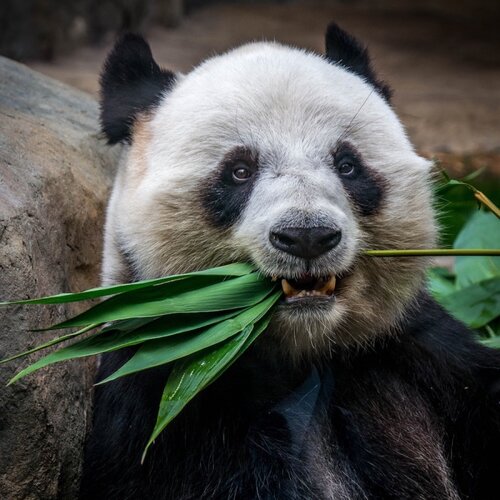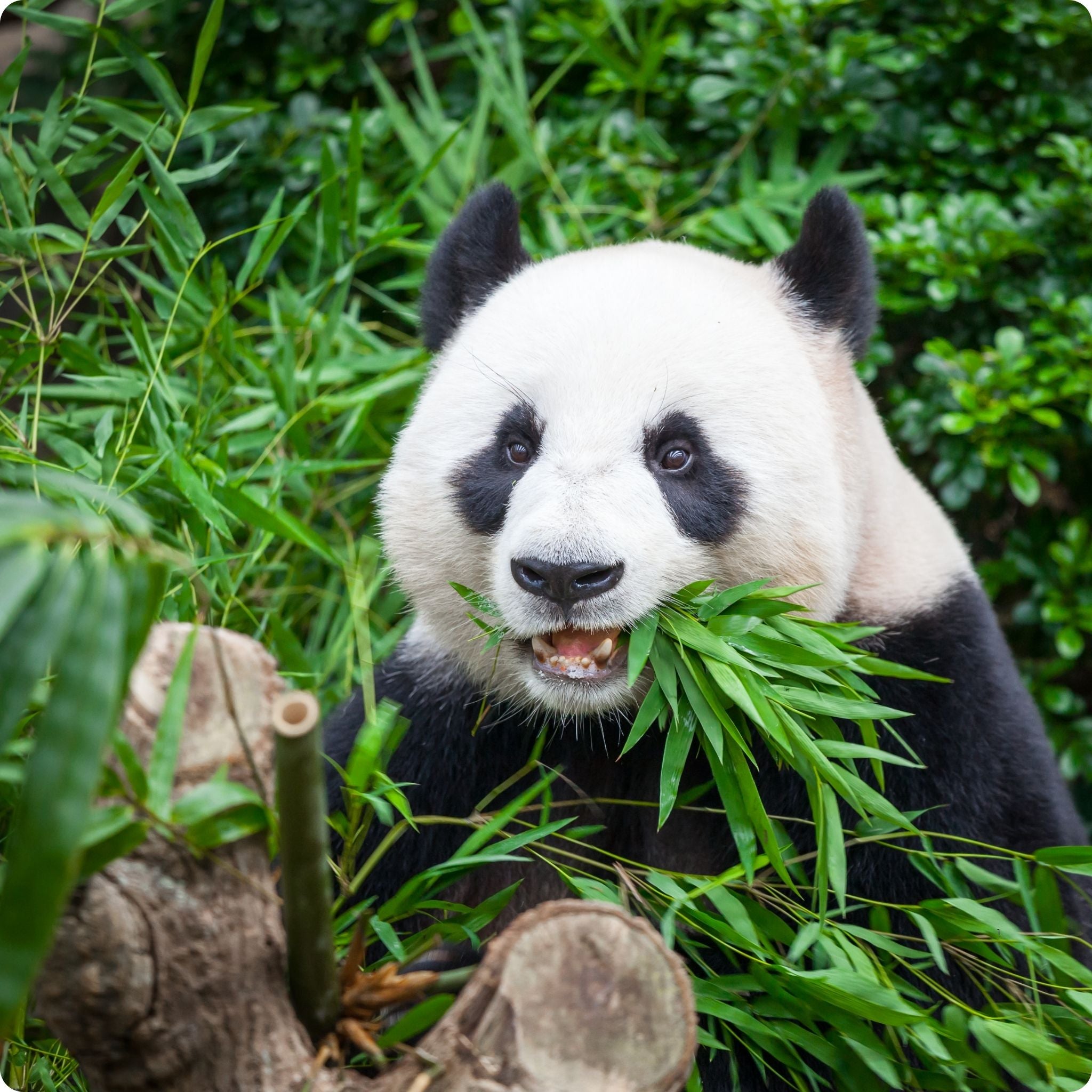
Giant Panda
Learn all about the iconic giant panda, wow your friends with some fascinating giant panda facts, understand how the panda became a symbol of conservation, where they live, how they spend their day and what they eat. Read about what makes the giant panda so important and how their limited habitat is threatening their future.
A global symbol of conservation
The giant panda is easily recognised by the large distinctive black patches around its eyes and across its body. Their thick wooly coat helps to keep them warm in their mountain home.
This peaceful animal is adored by people across the world and is considered a national treasure in China. The panda is also an international symbol of conservation since being adopted by the WWF for its logo.
Adult pandas grow to around 150cm from nose to rump, males are generally larger and heavier than females.


Where do giant pandas live?
Giant pandas were once found throughout eastern and southern China, northern Vietnam and northern Myanmar.
However, due to habitat loss they are now limited to around 20 patches of bamboo forest across six mountain ranges in China's Sichuan, Shaanxi and Gansu provinces.
These high bamboo forests are cool and wet, the pandas may climb as high as 13,000 feet to feed on higher slopes in the summer.
China now has a network of 67 panda reserves, helping to safeguard many of the giant pandas in the wild.

How do giant pandas spend their day?
Giant pandas are excellent tree climbers, but they spend most of the time feeding and can often be seen eating in a relaxed sitting position, with their hind legs stretched out in front of them. They lead a solitary life and rarely have contact with other pandas. However, they do communicate with each other either through sound or scent marking. Pandas are not territorial but they do have a home range and will mark their roaming routes by clawing tree trunks, rubbing against objects or spraying urine.
A female panda will normally give birth to a single cub every two years. A new born panda cub is born pink and weighs between 90 and 130 grams, just 1/900th of its mothers weight and measures around 15cm – the size of a pencil! Panda cubs are dependent on their mothers for the first 8 to 9 months of their lives and generally stay with their mother until she becomes pregnant again 18 months later.
A fully grown panda has few predators, however some animals will prey on panda cubs.


What do giant pandas eat?
Pandas are officially ‘omnivores’ meaning they eat both meat and vegetation, however 99% of their diet is bamboo.
Since bamboo contains very little nutritional value pandas must eat between 12 and 38kg every day to meet their energy needs. A panda can easily spend 14 hours a day eating the leaves, stems and shoots of various bamboo species. While they are almost entirely vegetarian, pandas will sometimes eat eggs or small animals.
They have two unique physical features that help them to hold, crush and eat bamboo, these are an enlarged wrist bone that functions as a thumb and broad, flat molar teeth.
The giant pandas reliance on bamboo has made them particularly vulnerable to habitat loss.


Why are giant pandas so important?
Giant pandas play a crucial role in the bamboo forests where they roam by spreading seeds in their droppings, which helps the vegetation to thrive.
The pandas’ habitat in the Yangtze basin has amongst the highest biodiversity of any ecosystem in the world. Maintaining this is vitally important for the survival of other endangered species, including golden monkeys, takins, red pandas, snow leopards and the crested ibis.
Their habitat at the geographic and economic centre of China is also home to millions of people, for them, the giant panda brings huge economic benefits through ecotourism.




